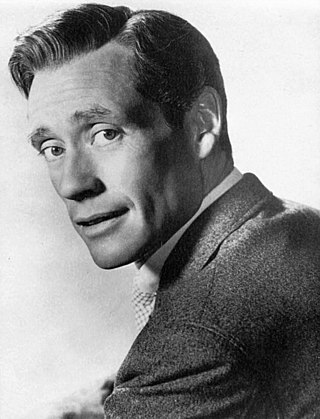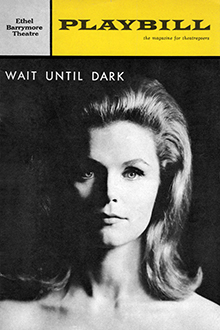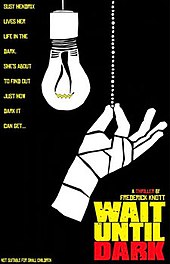
Ruth Gordon Jones was an American actress, screenwriter, and playwright. She began her career performing on Broadway at age 19. Known for her nasal voice and distinctive personality, Gordon gained international recognition and critical acclaim for film roles that continued into her 70s and 80s. Her later work included performances in Rosemary's Baby (1968), What Ever Happened to Aunt Alice? (1969), Where's Poppa? (1970), Harold and Maude (1971), Every Which Way But Loose (1978), Any Which Way You Can (1980), and My Bodyguard (1980).

Crossfire is a 1947 American film noir drama film starring Robert Young, Robert Mitchum and Robert Ryan which deals with the theme of anti-Semitism, as did that year's Academy Award for Best Picture winner, Gentleman's Agreement. The film was directed by Edward Dmytryk and the screenplay was written by John Paxton, based on the 1945 novel The Brick Foxhole by screenwriter and director Richard Brooks. The film's supporting cast features Gloria Grahame and Sam Levene. The picture received five Oscar nominations, including Ryan for Best Supporting Actor and Gloria Grahame for Best Supporting Actress. It was the first B movie to receive a Best Picture nomination.

The Rose Tattoo is a three-act play written by Tennessee Williams in 1949 and 1950; after its Chicago premiere on December 29, 1950, he made further revisions to the play for its Broadway premiere on February 2, 1951, and its publication by New Directions the following month. A film adaptation was released in 1955. The Rose Tattoo tells the story of an Italian-American widow in Mississippi who has withdrawn from the world after her husband's death and expects her daughter to do the same.

Lee Ann Remick was an American actress and singer. She was nominated for the Academy Award for Best Actress for the film Days of Wine and Roses (1962).

Marisa Tomei is an American actress. She gained prominence for her comedic performance in My Cousin Vinny (1992), which earned her the Academy Award for Best Supporting Actress. She received further nominations in the category for In the Bedroom (2001) and The Wrestler (2008).

Guys and Dolls is a musical with music and lyrics by Frank Loesser and book by Jo Swerling and Abe Burrows. It is based on "The Idyll of Miss Sarah Brown" (1933) and "Blood Pressure", which are two short stories by Damon Runyon, and also borrows characters and plot elements from other Runyon stories, such as "Pick the Winner". The show premiered on Broadway in 1950, where it ran for 1,200 performances and won the Tony Award for Best Musical. The musical has had several Broadway and London revivals, as well as a 1955 film adaptation starring Frank Sinatra, Marlon Brando, Jean Simmons, and Vivian Blaine.

Efrem Zimbalist Jr. was an American actor best known for his starring roles in the television series 77 Sunset Strip and The F.B.I. He is also known as recurring character "Dandy Jim Buckley" in the series Maverick and as the voice of Alfred Pennyworth in the DC Animated Universe.

Biagio Anthony "Ben" Gazzara was an American actor and director of film, stage, and television. He received numerous accolades, including a Primetime Emmy Award and a Drama Desk Award, in addition to nominations for three Golden Globe Awards and three Tony Awards.

They All Laughed is a 1981 American romantic comedy film directed by Peter Bogdanovich and starring Ben Gazzara, Audrey Hepburn, John Ritter, Colleen Camp, Patti Hansen, and Dorothy Stratten. The film was based on a screenplay by Bogdanovich and Blaine Novak. It takes its name from the George and Ira Gershwin song of the same name.

Lawrence James Tierney was an American film and television actor who is best known for his many screen portrayals of mobsters and tough guys in a career that spanned over 50 years. His roles mirrored his own frequent brushes with the law. In 2005, film critic David Kehr of The New York Times described "the hulking Tierney" as "not so much an actor as a frightening force of nature".

Melchor Gastón Ferrer was an American actor and filmmaker. He achieved prominence on Broadway before scoring notable film hits with Scaramouche, Lili, and Knights of the Round Table. He starred opposite his wife, actress Audrey Hepburn, in War and Peace and produced her film Wait Until Dark. He also acted extensively in European films and appeared in several cult hits, including The Antichrist (1974), The Suspicious Death of a Minor (1975), The Black Corsair (1976), and Nightmare City (1980).

Sam Levene was a Russian-American Broadway, films, radio, and television actor and director. In a career spanning over five decades, he appeared in over 50 comedy and drama theatrical stage productions. He also acted in over 50 films across the United States and abroad.

Jack Weston was an American actor. He was nominated for a Golden Globe Award in 1976 and a Tony Award in 1981.

The Guilty is a 1947 American film noir directed by John Reinhardt, based on Cornell Woolrich's short story "He Looked Like Murder". The film was produced by oil millionaire Jack Wrather, the husband of lead actress Bonita Granville.
Frederick Major Paull Knott was an English playwright and screenwriter known for complex crime-related plots. Although he was a reluctant writer and completed a small number of plays, two have become well-known: the London-based stage thriller Dial M for Murder, later filmed in Hollywood by Alfred Hitchcock, and the 1966 play Wait Until Dark, which was adapted to a Hollywood film directed by Terence Young. He also wrote the Broadway mystery Write Me a Murder.

Elizabeth Welter Wilson was an American actress whose career spanned nearly 70 years, including memorable roles in film and television. In 1972 she won the Tony Award for Best Featured Actress in a Play for her role in Sticks and Bones. Wilson was inducted into the American Theater Hall of Fame in 2006.

Wait Until Dark is a 1967 American psychological thriller film directed by Terence Young and produced by Mel Ferrer, from a screenplay by Robert Carrington and Jane-Howard Carrington, based on the 1966 play of the same name by Frederick Knott. The film stars Audrey Hepburn as a blind woman, Alan Arkin as a violent criminal searching for drugs, and Richard Crenna as another criminal, supported by Jack Weston, Julie Herrod, and Efrem Zimbalist Jr.

Dominic Fumusa is an American stage and screen actor known for starring in the Showtime comedy-drama series Nurse Jackie.

The Big Street is a 1942 American drama film starring Henry Fonda and Lucille Ball, based on the 1940 short story "Little Pinks" by Damon Runyon, who also produced it. It was directed by Irving Reis from a screenplay by Leonard Spigelgass.


















